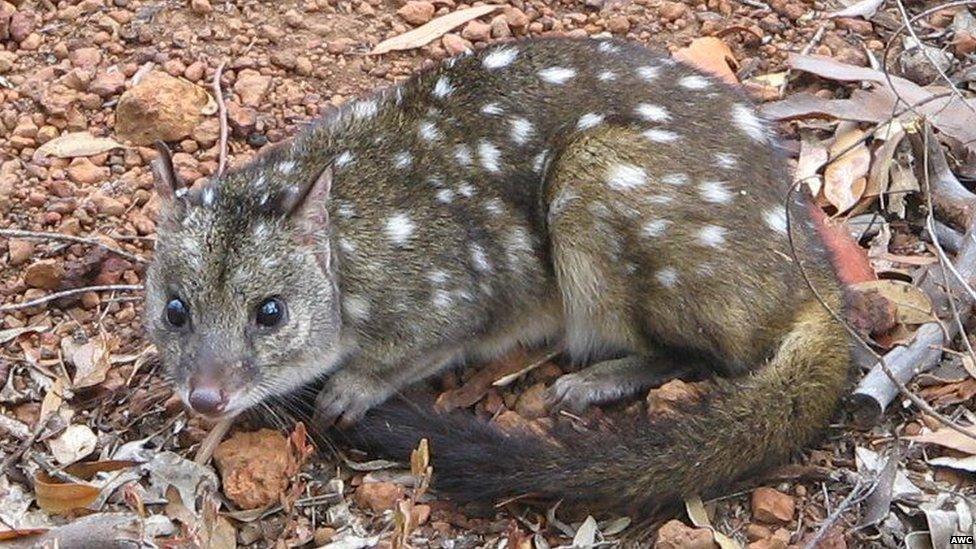The man who culls wallabies by the thousand
- Published
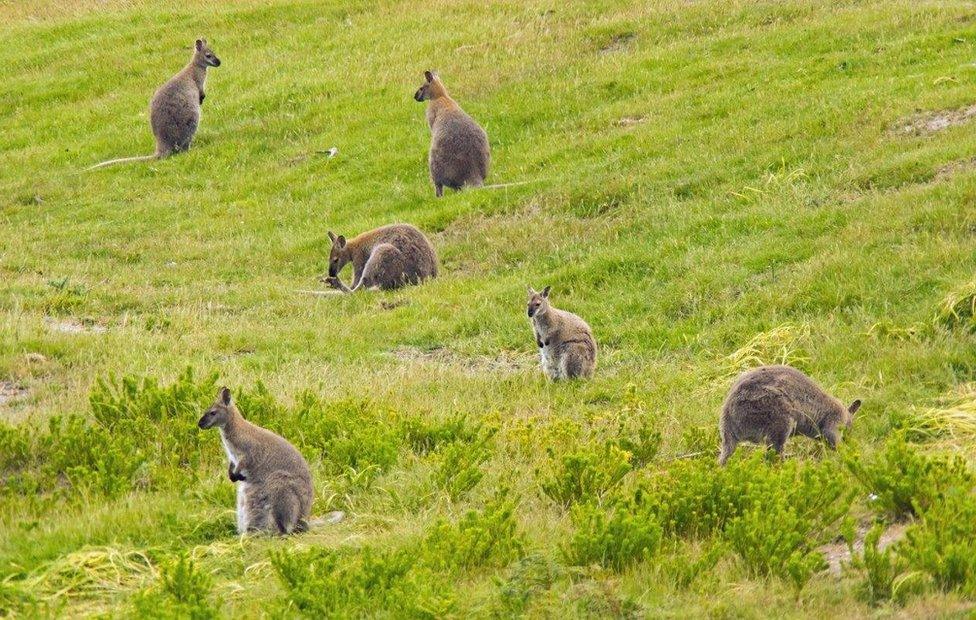
An enormous population of wallabies calls King Island in the Bass Strait home
Last year, 83,000 wallabies were culled on Australia's King Island, and 30,000 were shot by a single man, writes Paul Carter.
Depending on who you talk to, there's anywhere between 500,000 and one million wallabies on the 1,100sq km (424 sq mile) King Island, which is 64km long, 26km wide and has a human population of just 1,600.
The lush, rolling pastures that feed the island's acclaimed beef and dairy cattle also support this extraordinary population of Bennett's wallaby, which feast by night while resting and breeding by day in their coastal scrub fortresses.
"It's just a perfect breeding ground for them," says the island's sharpshooter Shane Keeler who last year claimed 30,000 kills at A$3 ($2.3; £1.60) a pop.
He co-ordinates the Tasmanian government's Wallaby Management Program on the island.
"I was talking to an old bloke who lives down south and he said, 'back when I was a boy we'd be lucky to get 10 wallabies' and now you could go out and shoot four or five hundred in a night."
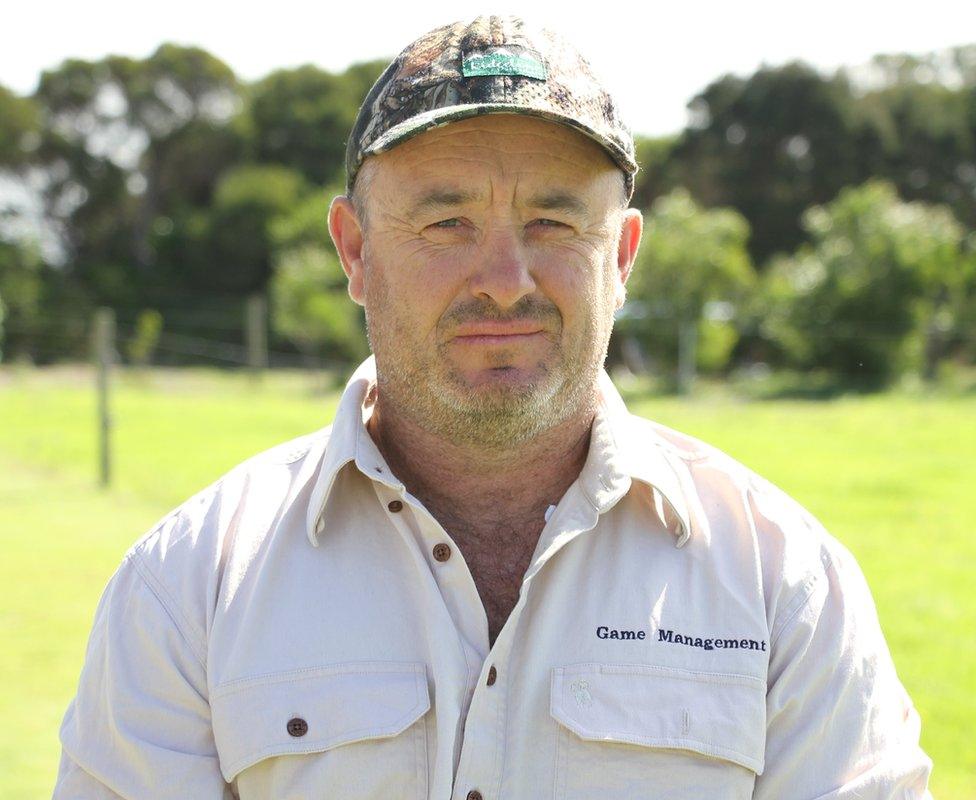
King Island sharpshooter Shane Keeler teaches farmers how to cull wallabies efficiently
The programme allows for a virtually perpetual open season on hunting the Bennett's wallaby to control their numbers. It also coaches culling technique and supports the rollout of wallaby fencing.
But animal welfare activists say kangaroos and wallabies, demonised as expendable vermin, are commonly subjected to abhorrent treatment.
"It's the largest land-based wildlife slaughter in the world," said Elise Burgess, spokeswoman for Voiceless, an animal welfare think tank focused on the commercial slaughter of kangaroos.
"Australian Bureau of Statistics figures show that over the last 30 years, 90 million kangaroos and wallabies have been commercially slaughtered. That's animals just killed for processing."
Ms Burgess said the slaughter method was largely self-regulated, involving many non-professional shooters as likely to wound an animal as kill it instantly with a bullet.
Voiceless urges research on fertility control and the establishment of nature corridors over lethal methods.
'Drop them properly'
Government guidelines call for a brain-shot instant death with in-pouch joeys either decapitated or killed with a blow to head.

Animal welfare activists say acts of cruelty against kangaroos and wallabies are relatively common
Wounded kangaroos, if they can be accessed, must be killed without delay.
Mr Keeler says he'll kill 70 or 80 wallabies straight with one shot each before he wounds one.
"Anyone who says they get 100% is [lying]," he says.
But the guidelines are largely self-regulated.
"I've got a commercial wallaby license. So I'm able to shoot and sell the product and I have a bloke that comes over from the department," Mr Keeler says.
"We'd shoot 30 or 40 and he'd check to see how I'm shooting them, making sure you are dropping them properly.
"But just with the normal farmers and their shooting they are just left to themselves."
That's where the Wallaby Management Program could be helpful.
While he shoots freelance, Mr Keeler also educates farmers and their hands on fencing, shooting and spotlighting techniques to increase the cull's efficiency and save their pastures from the wallabies.
"One thing I tell them is not to shoot them from a long distance. They are pretty quiet over here so you can drive right up to them. The closer you get to them the more percentage you are going to shoot," he says.

Slaughter at scale
The state of Victoria last year more than doubled its annual commercial kill quota of eastern grey kangaroos to 169,488 after starting a pet food trial, extended recently to 2018.
In 2014, New South Wales (NSW) allowed a commercial kangaroo kill quota of 2,388,424 from five species with an estimated population of 15,330,399.
In 2012, 5,249,678 kangaroos were killed for commercial processing in NSW, Queensland, South Australia, and Western Australia.
California this year reinstated a ban on kangaroo products, meat, pet food and leather, ending a 2007 moratorium on the ban first imposed in 1971 on animal welfare grounds.

The island native said about 8,000 of the 83,000 wallabies were processed on the island for either human consumption or lobster bait.
The rest were mostly left to rot, helped by a thriving crow population that locals said were also stealing balls from the fairways of a new golf course on the island.
'De-facto fertiliser'
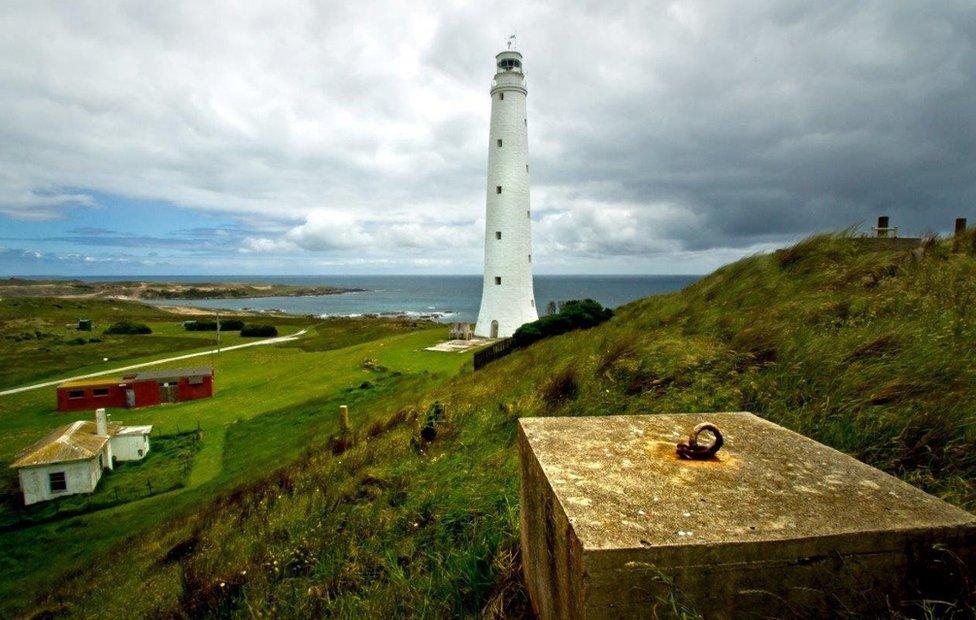
King Island lies in the Bass Strait between the Australian states of Tasmania and Victoria
A leading golf magazine this year rated Cape Wickham Links as Australia's third-best golf course and the 24th best in the world.
But Mr Keeler said he was expecting a call soon from the golf club after he made a recent visit.
"There would be 400 wallabies up there," he said, which leave faeces "everywhere".
"It's going to be a problem I'd say."
But the course's Melbourne-based owner Duncan Andrews said the animals weren't a major issue.
The fairway mowers mulched the droppings into powder, turning them into a "de-facto fertilizer".
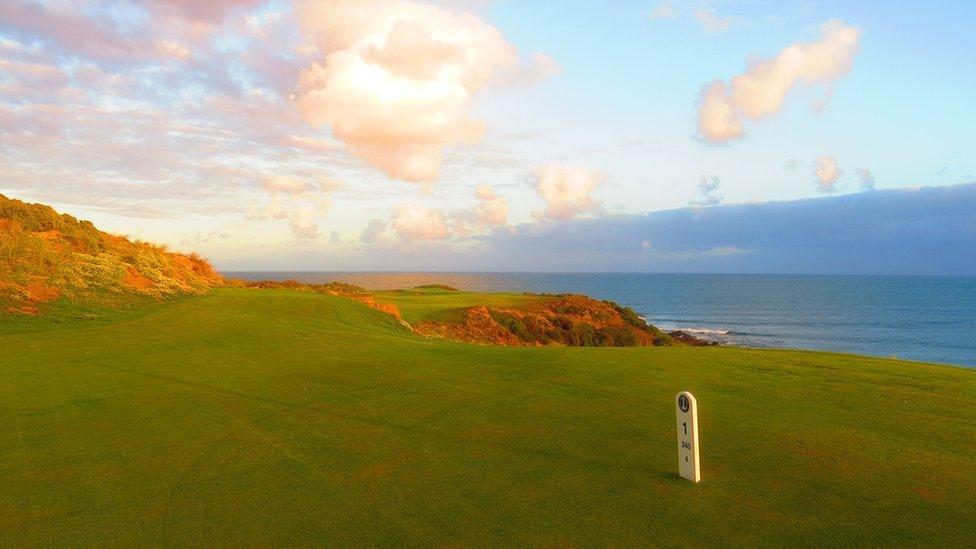
The owner of the exclusive Cape Wickham golf course says wallabies are not a major problem there
He said only about 100 wallabies were jumping his perimeter wallaby fence.
"They seem to reside near three fairways - eighth through ten," he said.
"The only problem we have with the wallabies is that they are a danger to motor vehicles driving between the airport and Cape Wickham, particularly at night."
- Published8 February 2016
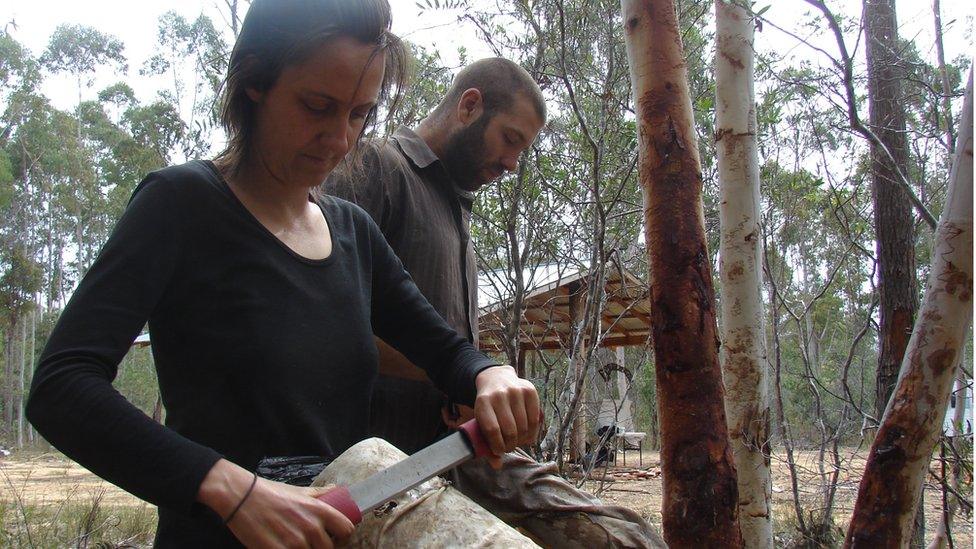
- Published14 October 2015
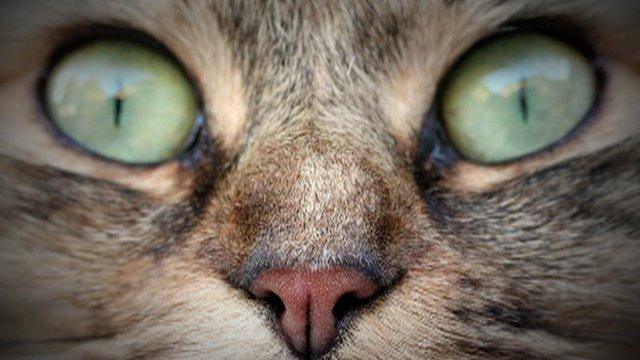
- Published8 October 2015
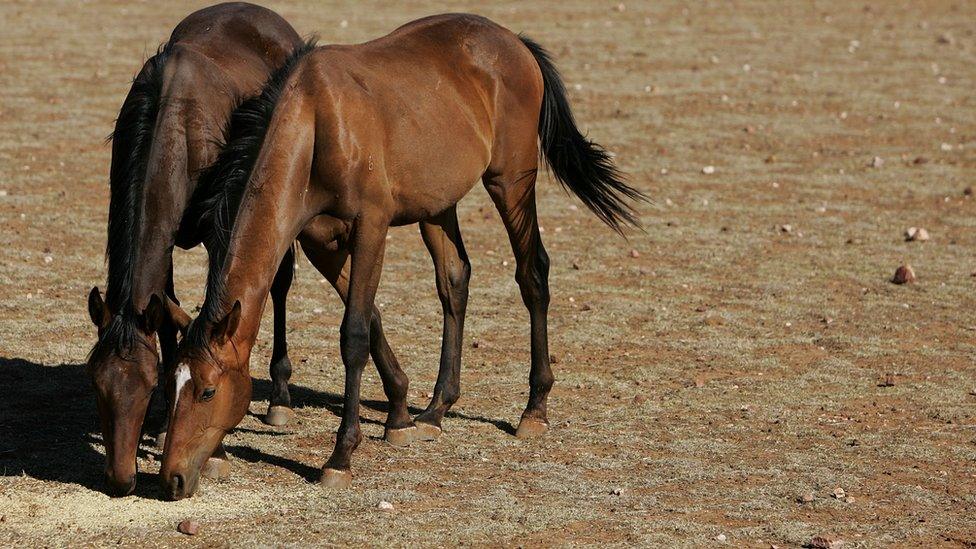
- Published27 September 2015
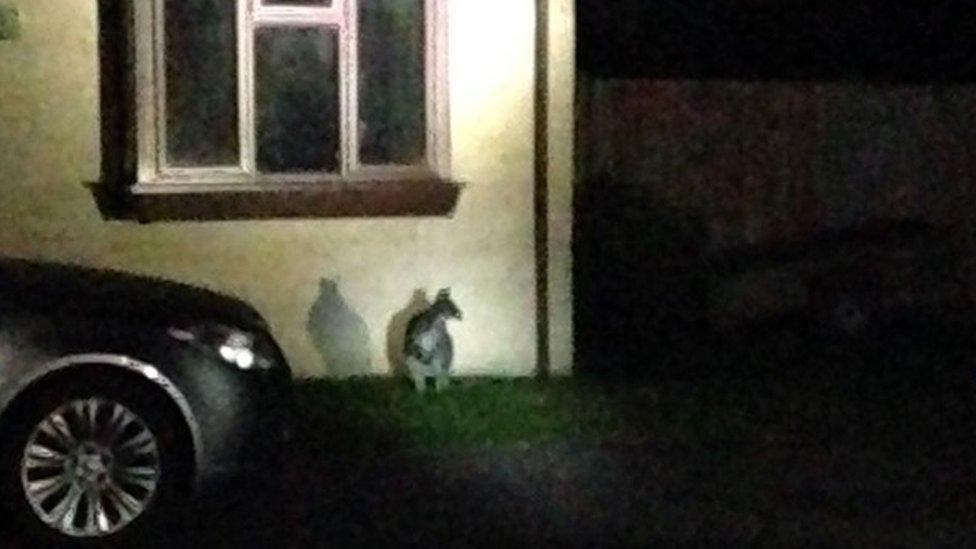
- Published10 July 2015
